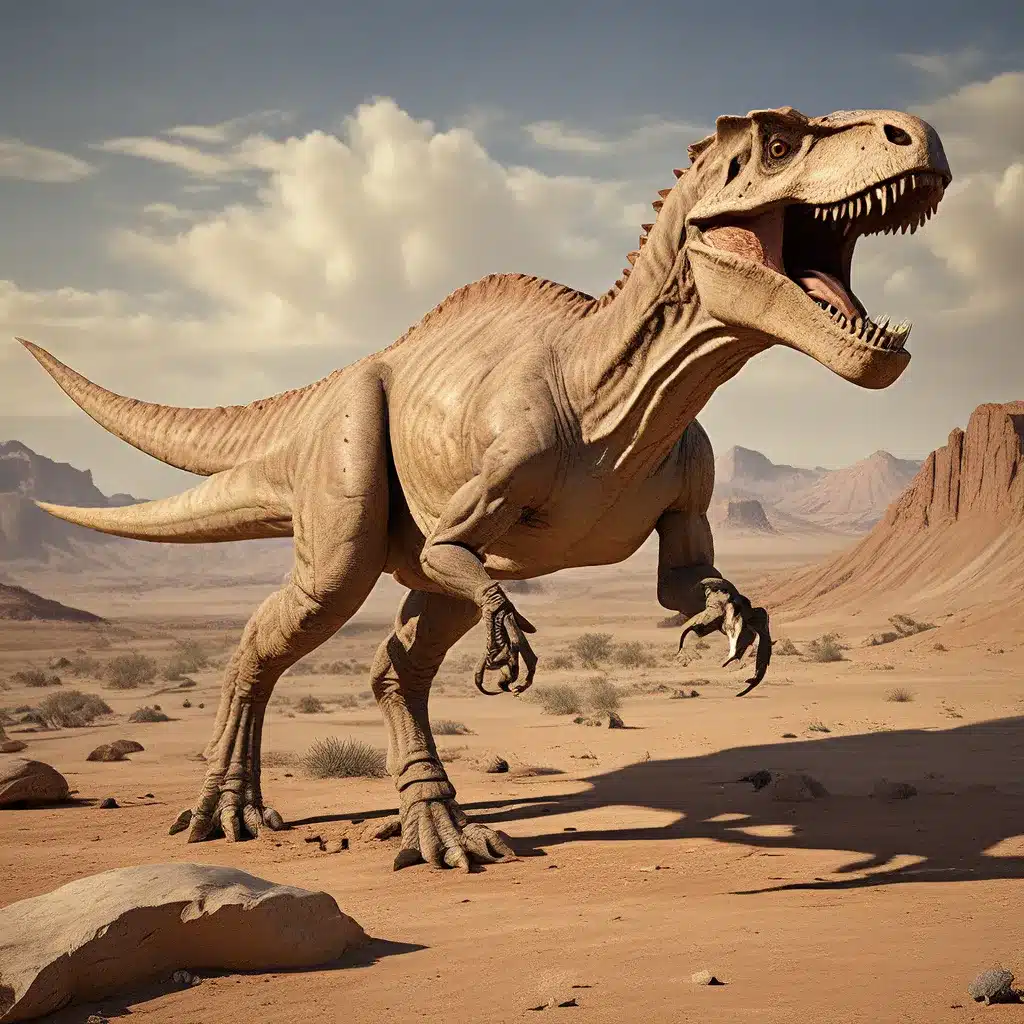
Unearthing the Truth: Ancient Cultures and the Origins of Dinosaur Myths
Throughout history, the discovery of ancient fossils has captured the imagination of cultures around the world. From the towering skeletons of T. rex to the mysterious tooth-like structures of megalodon, these remnants of the past have long been the subject of speculation and wonder. But how did our ancestors, with their limited knowledge of the natural world, come to understand and interpret these remarkable finds?
Imagine yourself as a medieval farmer, stumbling upon the massive skull of a long-extinct predator. With no concept of prehistoric creatures, how might you have explained the existence of such a thing? The ancient myths and legends that arose from these discoveries reveal the diverse ways in which our ancestors attempted to make sense of the world around them.
As one Redditor suggests, it’s possible that early cultures, upon encountering dinosaur fossils, began to draw comparisons to modern-day reptiles and lizards. From there, myths and stories may have developed, imbuing these ancient creatures with magical powers and transforming them into the fearsome beasts of legend.
Interpreting the Bones: Cultural Perspectives on Prehistoric Finds
The discovery of colossal bone fragments and teeth has long captivated the human imagination. In many cultures, these mysterious relics were viewed as the remains of mythical creatures or supernatural beings, rather than the vestiges of long-extinct animals.
For example, in China, the discovery of large fossil bones was often attributed to the remains of dragons – powerful, serpentine creatures that featured prominently in Chinese mythology. Similarly, in ancient Greece, the unearthing of large bones was sometimes interpreted as evidence of the existence of giants, lending credence to the tales of mythological heroes and demigods.
| Culture | Interpretation of Fossil Finds |
|---|---|
| China | Remains of **dragons** |
| Ancient Greece | Remains of **giants** |
These cultural perspectives on prehistoric fossils reveal the profound influence that myths and legends have had on our understanding of the natural world. As these ancient civilizations grappled with the mysteries of their environments, they sought to reconcile their limited knowledge with the tangible evidence of these extraordinary creatures.
Megalodon: The Shark of Legends
The discovery of megalodon fossils has also been the subject of intense speculation and mythmaking throughout history. This colossal prehistoric shark, which may have grown up to 18 meters in length, has captured the public imagination and inspired numerous legends and fictional depictions.
According to the Natural History Museum, the earliest megalodon fossils date back 20 million years, and the species dominated the oceans for 13 million years until its extinction around 3.6 million years ago. The massive size and powerful jaws of this ancient predator led to speculation that it may have been a mythical sea monster, or even a modern-day creature still lurking in the depths of the ocean.
The 2018 film “The Meg”, which depicted a 23-meter-long megalodon, further fueled the public’s fascination with this prehistoric giant. However, as the museum’s expert notes, the actual size of the megalodon was likely closer to 15-18 meters – still an impressive and formidable creature, but not quite as exaggerated as its Hollywood counterpart.
Evolving Perspectives: The Shift from Myth to Science
As scientific understanding of the natural world has progressed over the centuries, the interpretation of ancient fossil finds has undergone a remarkable transformation. What were once mythical creatures and supernatural beings are now recognized as the remnants of long-extinct animals, whose evolutionary histories and ecological roles have become the subject of intense scientific study and discovery.
For example, the humble cockroach, once thought to be a harbinger of disease and misfortune, is now understood to be a resilient and adaptable creature that has existed for millions of years, pre-dating even some dinosaurs. As our scientific knowledge has expanded, we have gained a deeper appreciation for the complexity and diversity of the natural world, and the stories that ancient cultures told to make sense of their discoveries**.
The study of dinosaur fossils and prehistoric creatures has been instrumental in this shift from myth to science. By carefully analyzing the physical evidence and employing cutting-edge techniques in paleontology and archaeology, researchers have uncovered a wealth of information about the evolutionary history and ecological relationships of these ancient beasts**.
Embracing the Unknown: Exploring the Mysteries of the Past
Despite the remarkable progress made in understanding the natural world, there remains much that is still unknown about the distant past. The discovery of new fossils and archaeological sites continues to challenge and expand our existing theories, leading to ongoing debates and exciting new avenues of research.
For instance, the recent discovery of a megalodon fossil in Peru, which reportedly includes the braincase and all the teeth with a small string of vertebrae, may provide unprecedented insights into the anatomy and biology of this ancient shark. As the museum’s expert notes, this extraordinary fossil could help create a better picture of what these gigantic predators truly looked like.
Similarly, the ongoing exploration of remote archaeological sites has yielded remarkable discoveries that challenge our existing understanding of the ancient world. From the mysterious terracotta warriors of China to the lost civilizations of the Amazon rainforest, these archaeological treasures continue to captivate and inspire us, reminding us that there is still so much to be learned about our shared human past.
As we delve deeper into the mysteries of the ancient world, we must embrace the unknown and remain open to new perspectives and interpretations. By combining the insights of science, archaeology, and cultural studies, we can unravel the complex and fascinating stories that lie buried within the earth, and gain a richer understanding of our shared human experience.


